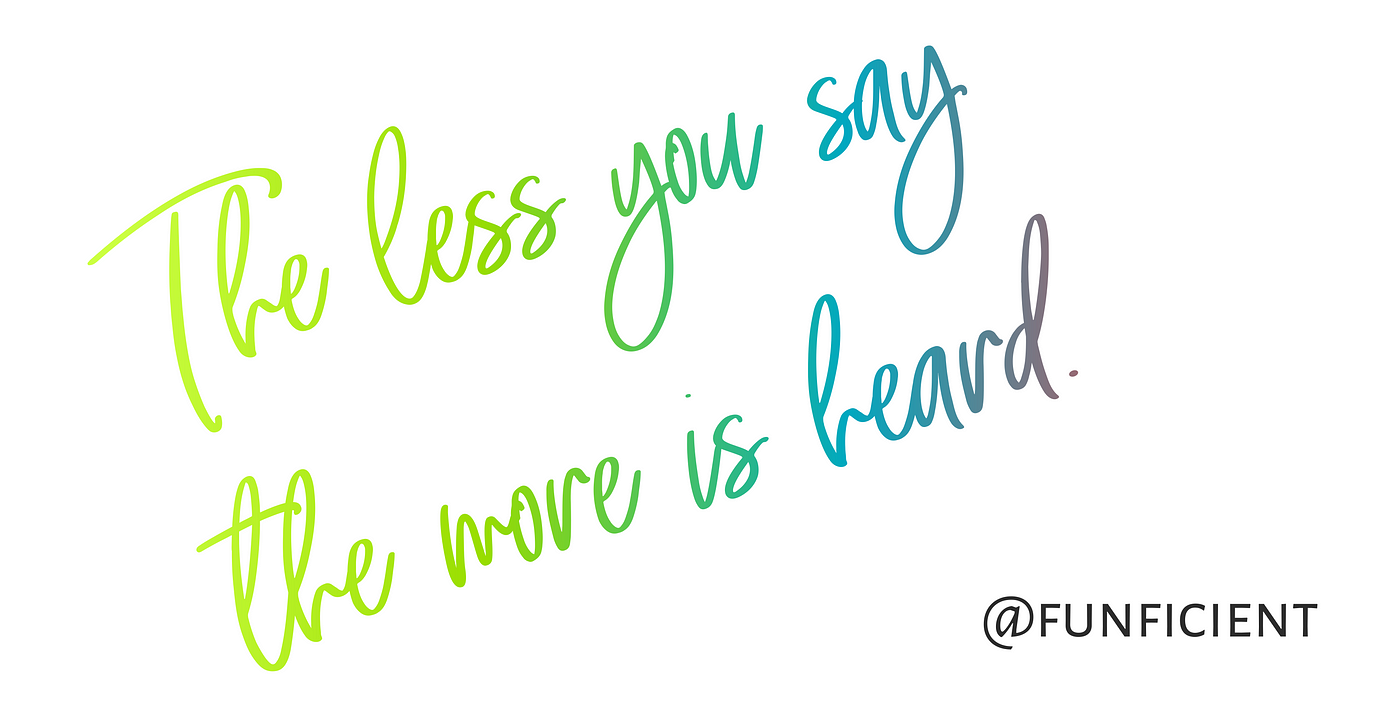
Solving the Biggest Waste in Agile
How to Get Teams Talking
In a previous post I touched on the loss of information between teams as one of the biggest causes of waste in agile. This post aims to focus on the solution to reduce the loss of communication.
First, let me provide some context.
You are about to go on a well-deserved and long overdue holiday. You feel relaxed and look forward to spending some time with your family. All that needs to be done before you can leave is a final handover to make sure nothing falls through the cracks while you’re gone. Your team is more than competent and your manager knows you’ve spent a lot of time making sure your tea knows what needs to be done while you’re gone.
You go on holiday with a light heart, expecting to come back to a productive and happy team with all the work done.
Soon after you’re gone, however, your manager — a micro-manager and control freak — goes to a resource in a different team whom she trusts — let’s call him Jim — and with good intention asks him to make sure the work gets done.
Jim, an eager and hands-on resource, however, causes conflict and confusion when he takes over the tasks the other team is busy with. He feels uncomfortable and out of place, yet is eager to show his manager what a valuable resource he is and continues doing the task his way. Meanwhile, the team is upset, feeling redundant and incompetent and not understanding why they are not being trusted to do the work. A tug of war erupts with both sides trying to keep their individual line managers happy.
With two teams now responsible for the same task, things suddenly start falling apart with one person starting a task just to find out that someone else is also working on it causing errors in the build when trying to deploy the work to the production branch of code.
Both teams feel unhappy and resentment starts growing. After two weeks you return to an unhappy, demotivated team with the work not done, or at least not as good as you expected it to be done. You don’t understand what went wrong…
The bad and the ugly about communication
If this scenario seems familiar, your organization — like most organizations I’ve encountered — suffers from communication breakdown.
As a result of crossed lines of communication between different teams or resources, work supposed to be done within a week by one team now takes two or even three weeks or longer with two or more teams involved, increasing the cost of production by 300% or more while customer satisfaction ratings are going down and the sales and customer support team’s workload is being impacted by the lower quality work.
So here’s some ugly truths about communication that you might or might not know.
Truth #1: People hear what they want to hear
Each person will have or make their own assumptions based on their own beliefs and knowledge and experience. The one thing you can be sure of is what you said is not what was heard.
Truth #2: Less is more
Confusion happens when you get conflicting messages from two different sides. Realize that every time you increase the number of people in a line of communication, the message gets diluted.

Truth #3: Too many cooks spoil the broth
Amazon’s Jeff Bezos recommends that team meetings should consist of no more people than can be fed on two pizzas. Involving more people in a meeting or task does not result in better communication or faster results. Rather, it introduces more complexity and confusion.
Truth #4: Noise is everywhere
In a psychology experiment two designers are asked to design something for a client. He already has something that he came up with, and would like to compare it with the designers’ work. The designers, priding themselves in the originality of their work, is shocked and surprised when they present their concept and it is a near exact match to the client’s concept. Here is the full video:
Derren Brown - Subliminal Advertising
How did this happen? The taxi ride to the client was designed intentionally to drive past certain artifacts that influenced their final design so much that it was a near exact match.
Truth #5: You don’t know what you don’t know.
The one thing you can be sure of when embarking on a new task is that you don’t know what is going to happen in the future and you don’t have all the answers. If you did, you would have planned for it.
What it takes to get your message across
Rule # 1: Think more, say less.
Don’t think out loud. Good communication is lean communication. 80% of communication is non-verbal. One word or sentence often has more impact than an hour long speech. Spend more time figuring out what you want to say and why, less time talking.
Rule # 2: Deal with the interference.
Protect your team with clear boundaries and responsibilities. Not to be confused with red tape.
Be sure that your team knows who they can ask for clarity while you’re away. Make sure that only one person takes final responsibility. Make sure that the task is explicit.
Rule #3: Go direct.
Cut out the middleman. Never, ever, EVER rely on a messenger to deliver a message. Ever.
One of the principles of agile software development is that the best form of communication is face-to-face communication.
Have a one-to-one relationship between responsible and accountable. Reduce the number of different authority lines. Give direct responsibility to each person or team and hold only them accountable for the results.
Rule #4: Focus on the results.
Each person has a different style and different skills. What is easy for you might not be easy for someone else. As opposed to making sure that the team knows how to do a task, focus on what you want the end-result to be. What does success look like?
Be very explicit about what needs to be done, who will be held responsible, when it needs to be done, who needs to be informed and what to do when there is an issue.
Rule #5: Provide context.
One of the best tools I’ve encountered as a business analyst is context diagrams. A simple diagram consisting of a bunch of boxes to indicate the different subsystems or functions, connected with lines labelled with at least a verb and a noun to explicitly define the purpose of the relationship between two functions. It works because it simplifies complexity and provides context as to how one task or team influences the rest of the system.
Visualize work to provide context with a simple drawing on a white board, a Kanban board, a task list or a context diagram.
Rule #6: Only give one person final responsibility.
There’s an old story on responsibility by an unknown author which best describes this rule. It goes like this:
There was an important job to be done and Everybody was sure that Somebody would do it. Anybody could have done it, but Nobody did it.
Somebody got angry about that because it was Everybody’s job. Everybody thought that Anybody could do it, but Nobody realized that Everybody wouldn’t do it.
It ended up that Everybody blamed Somebody when Nobody did what Anybody could have done.
The moral of the story is that if you want something done, give responsibility to one person only and make sure that everybody knows who is responsible.
Rule #7: Kill the Grapevine
Probably the biggest cause of issues in organizations are the grapevine. People relying on information from peers rather than going direct.
Don’t be too busy or unapproachable for people to ask you when they have questions and never make someone feel as if their question is stupid. Even if you think it is a stupid question, it takes maybe a few seconds to answer and clarify something compared to hours of even days of resolving an issues as a result of misinterpretation.
Make it safe for people to ask when they are uncertain and create a culture of open and honest communication.
Rule #8: Watch your Tone
Thank you. Please. Good work.
It’s free and it only takes a few seconds, yet is the single most powerful tool to increase productivity.
When you speak in a loud, aggressive voice, the recipient is more likely to be defensive, thinking of how to justify themselves rather than spending the time listening to what you are saying. If you want people to hear your message, soft and kind goes a long way.
If you want help getting your teams communicating, please drop me a line at www.funficient.com.
Originally published on Medium: https://medium.com/teal-times/solving-the-biggest-waste-in-agile-b5d9186364fb
